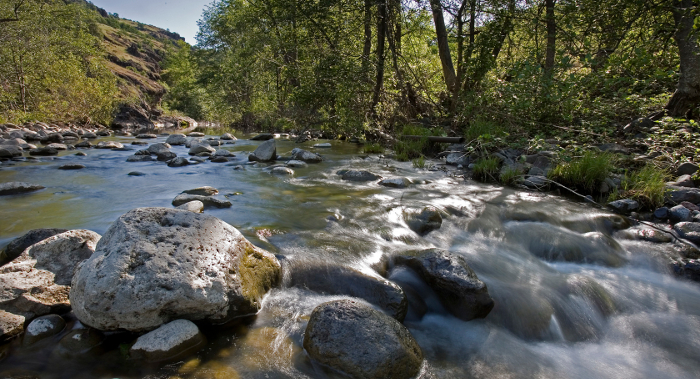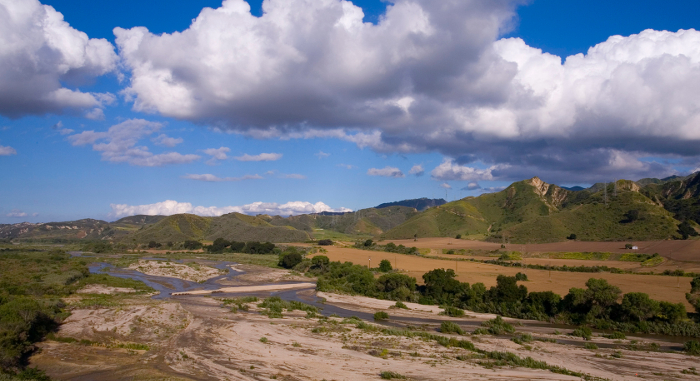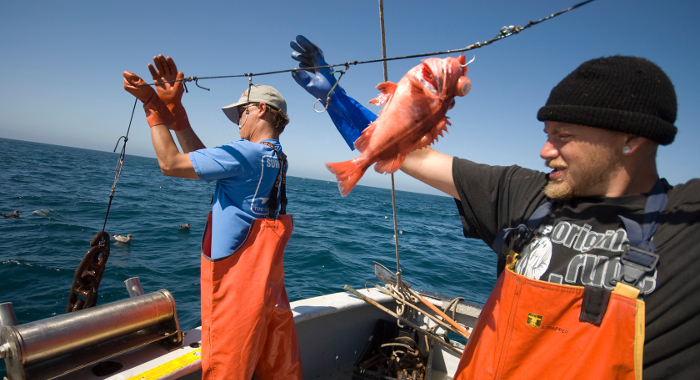Almost half of the world’s human population lives in coastal areas, and associated coastal development has significantly degraded or destroyed many coastal ecosystems. Burgeoning human populations and rising sea levels only further constrain the availability of habitat that coastal species depend on.
California’s 1,100 mile coast has more than 200 threatened, endangered or rare species living in coastal habitats. There are hundreds of coastal estuaries that provide critical rearing habitat for marine species, and are also important for recreation, water filtration, and carbon sequestration.
Only 10 percent of California’s historic coastal wetlands remain. Without intervention, we are at risk of losing 40 percent of our remaining coastal wetlands to sea level rise over the coming decades. Conservancy scientists are working to reverse these trends.












E.C. Underwood, J.H. Viers, K.R. Klausmeyer, R.L. Cox, M. R. Shaw
The mediterranean biome is one of the rarest terrestrial ecosystem types on Earth, restricted to only 2% of the world’s land surface. Encompassing portions of southern Australia, central Chile,…Victoria J. Bakker, Daniel F. Doak, Gary W. Roemer, David K. Garcelon, Timothy J. Coonan, Scott A. Morrison, Colleen Lynch, Katherine Ralls, Rebecca Shaw
Population models can be a critical tool in managing recovery of endangered species. This paper presents an analysis that became the foundation of recovery planning and tracking for the endangered…Erik Nelson, Guillermo Mendoza, James Regetz, Stephen Polasky, Heather Tallis, D. Richard Cameron, Kai MA Chan, Gretchen C. Daily, Joshua Goldstein, Peter M. Kareiva, Eric Lonsdorf, Robin Naidoo, Taylor H. Ricketts, M. Rebecca Shaw
Humans benefit from the goods and services provided by natural ecosystems like water filtration, carbon storage, and recreational opportunities to name a few. Assigning economic value to these…Underwood, E.C., K.R. Klausmeyer, R.L. Cox, S.M. Busby, S.A. Morrison, M.R.Shaw
Mediterranean habitats are among the rarest on Earth. Characterized by warm dry summers and cool wet winters, they are restricted to only 2% of the Earth’s land surface–portions of…DSL Ramsey, J Parkes, SA Morrison
Populations at very low abundance can be very difficult to detect. Consequently, one of the biggest challenges of eradication projects is determining whether an inability to detect the species at the…Scott Morrison, Walter Boyce
Critical for biodiversity conservation is the retention of ecological connectivity in the landscape, so that wildlife—and the natural processes that sustain wildlife—can move around.…Caroline Christian , Lawrence Saslaw, H. Scott Butterfield
To better understand the ecological role of cattle grazing in managing Carrizo Plain National Monument, we initiated a long-term study in 1997 designed to evaluate the effects of cattle grazing on…Golet G.H., T. Gardali, C. Howell, J. Hunt, R. Luster, B. Rainey, M. Roberts, H. Swagerty, N. Williams
Studies that assess the success of riparian restoration projects seldom focus on wildlife. More often, vegetation is studied, with the assumption that animal populations will recover once adequate…Dan Laffoley, Alan T. White, Stacey Kilarski, Mary Gleason, Scott Smith, Ghislaine Llewellyn , Jon Day , Annie Hillary, Victoria Wedell, Daphine Pee
With government, agency and organizational partners, Conservancy scientists helped publish an IUCN guidebook to inspire conservation investment in global marine protection and provide a case study…Scott A. Morrison, Norman Macdonald, Kelvin Walker, Lynn Lozier, M Rebecca Shaw
One of the greatest challenges in pest eradication is knowing when it has been achieved. This paper discusses why that is challenging, and why it is so important to consider how that challenge will be…M.D. White , J.A. Stallcup, K. Comer, M.A. Vargas, J.M. Beltran Abaunza, F. Ochoa, S.A. Morrison
The California South Coast Ecoregion, a global biodiversity hotspot, is bisected by the US-Mexico border. Development near the border, ranging from urban sprawl to border security infrastructure,…Gardali T. , A.L. Holmes, S.L. Small, N. Nur, G.R. Geupel, G.H. Golet
Restoration efforts on the Sacramento River are focusing on revegetating the land with native plants and restoring natural river processes in an attempt to recover wildlife populations. To evaluate…Golet G.H., M.D. Roberts , E.W. Larsen, R.A. Luster, R. Unger, G. Werner, G.G. White.
River restoration projects have the potential to influence many of the services that rivers provide to people, yet rarely is this studied in a comprehensive manner. This paper reports on a set of…United Nations Environment Programme, chapters co-authored by Scott Morrison
For the International Year of Deserts and Desertification, 2006, a team of environmental and social scientists assembled to assess the state of the world’s deserts. This report is the product of…Mary G. Gleason, Matt S. Merrifield, Chuck Cook, Audrey L. Davenport, Rebecca Shaw
This study is the first marine gap analysis for California. It quantifies what is protected and what is not and highlights conservation needs and opportunities. Less than 5% of marine habitats are…Mary Gleason, Matt Merrifield, Chuck Cook, Miguel Hall
The Conservancy's science and planning staff in California prepared this assessment of the most important areas for conservation of marine biodiversity in the Northern California…Marty, Jaymee T.
Livestock grazing in the American West often conjures up images of cattle degrading riparian areas or spreading weeds throughout desert rangeland. But cattle grazing does not always or necessarily…Scott A. Morrison, Douglas T. Bolger, T. Scott Sillett
Fragmentation-sensitive species – those that tend to disappear when their habitat is fragmented – pose particular challenges for conservation, in part because fragmentation ushers in such…